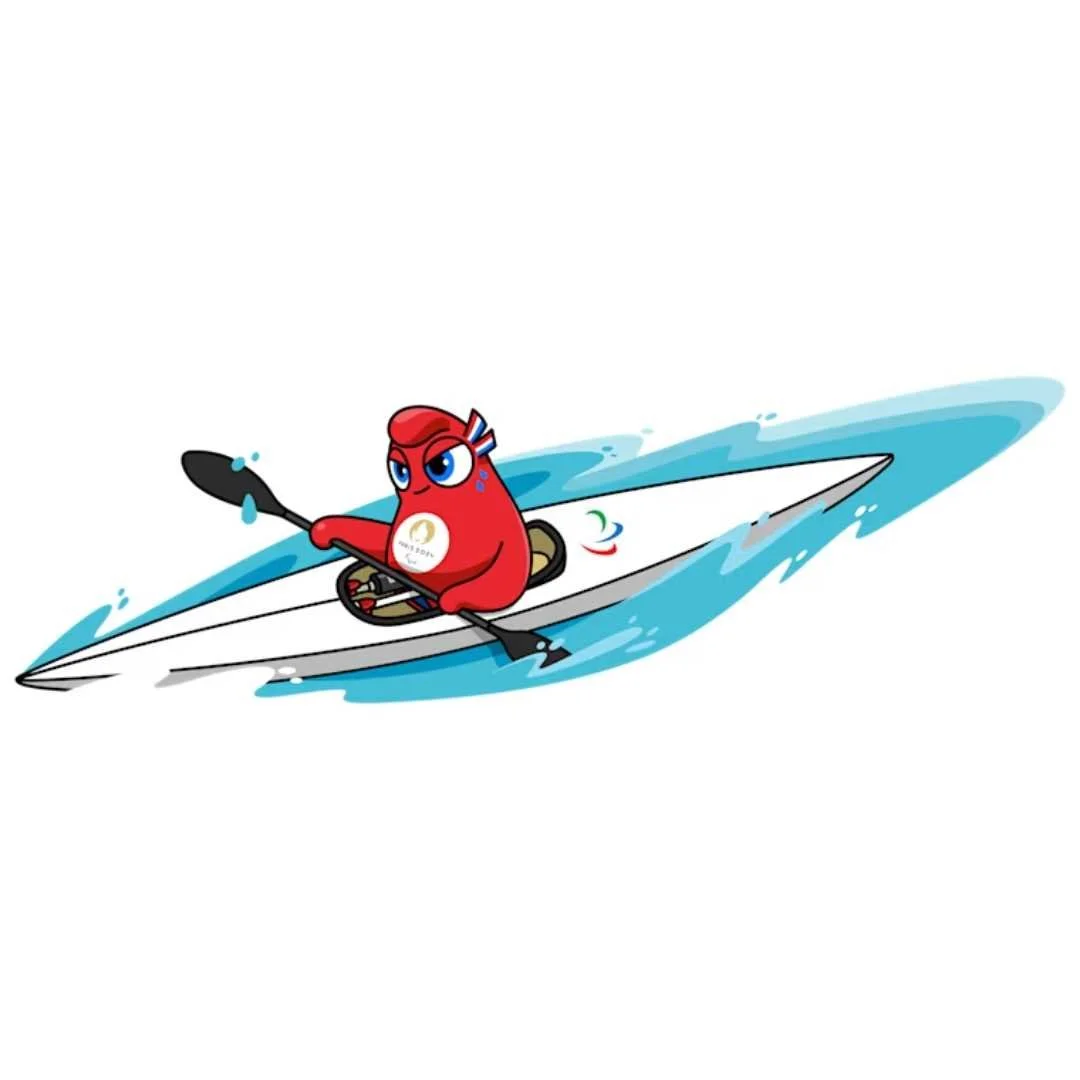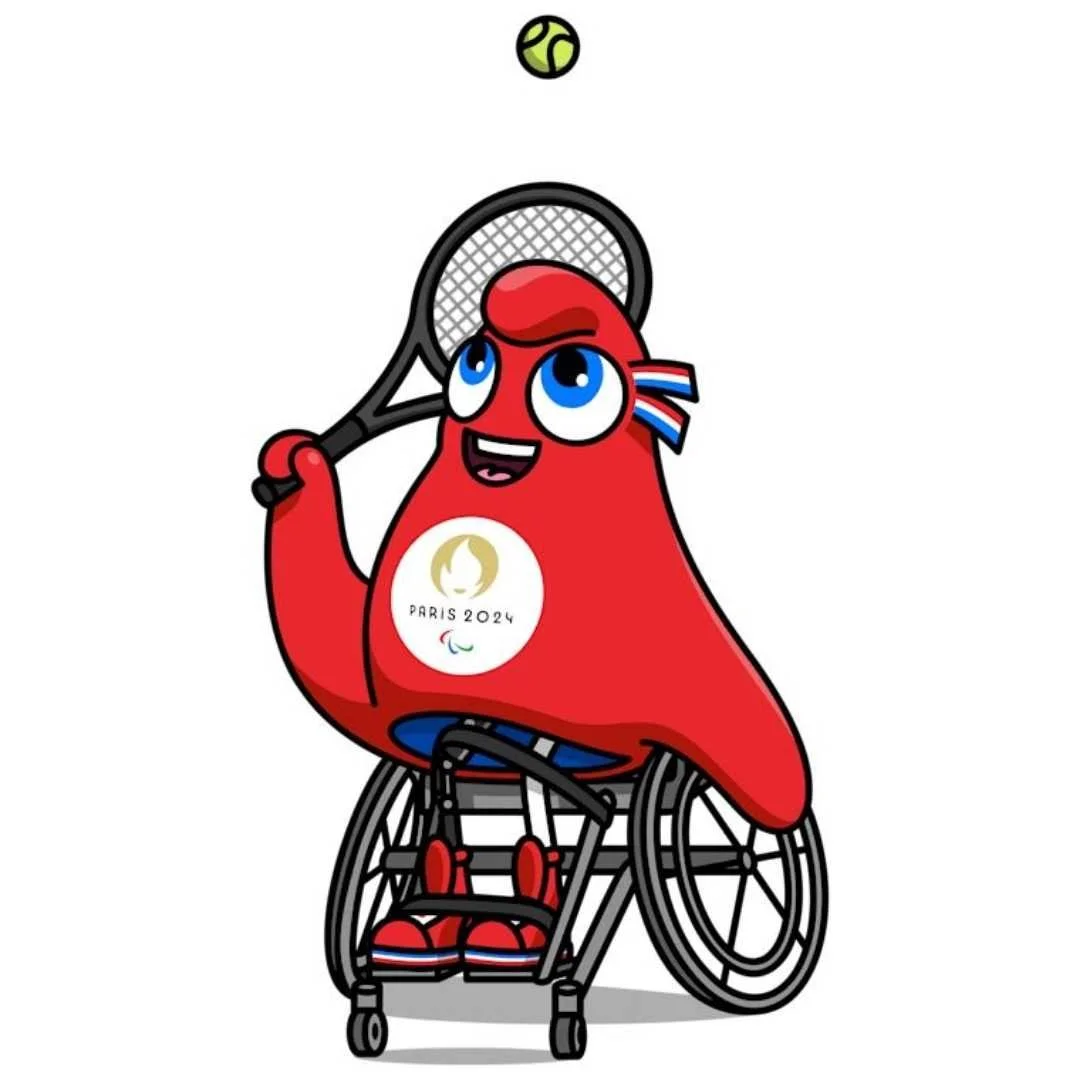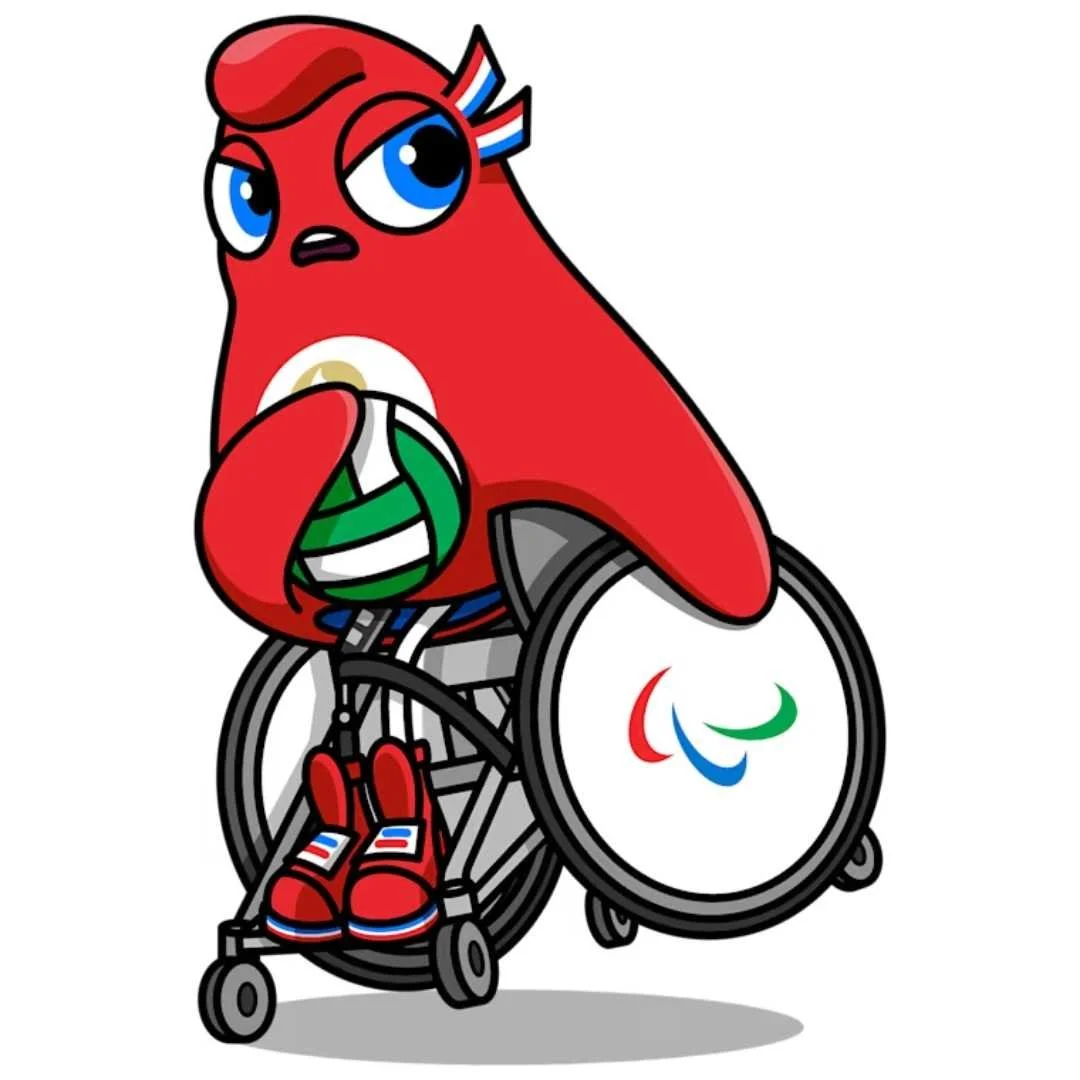TOP 10: Paralympic Sports to Watch Right Now
While the excitement over the Olympics occupies everyone’s attention for two straight weeks every other year, there’s a whole other Olympics that happens a few days later, that most people don’t talk much about. Until this year, I knew very little about the Paralympics, and between you and me, I’ve never watched them. This year, however, between the complete visibility of the Paralympic Phryge mascot, and the abundant accessibility of TV coverage on Peacock, I’ve finally set myself a reminder to watch the Paris 2024 Paralympic games. I’m so excited to finally watch them, and learn everything I can about the adaptability of sports for a number of visible and invisible impairments.
In preparation for the Paris 2024 Paralympic Games, taking place August 29 through September 7, I’ve read about nearly every Paralympic sport over the last two weeks. I’ve narrowed down my favorites to the Top 10 sports I’m most excited to follow over the next 11 days. So, hop into a Paralympic Phryge-covered French taxi and celebrate the extraordinary talents of these athletes from 164 delegations, and offer them the sport-fan enthusiasm they deserve. If you’re Paralympics-curious, and you forgot to cancel your Peacock account, I welcome you to join me on my inaugural viewing of the Paralympics in 2024.
RELATED CONTENT
Best Summer Olympics Sporting Event
10. Para Triathlon
Para triathlon made its debut at the Rio 2016 Paralympic Games, featuring a 750m swim, 20km cycle, and a 5km run — half the distance of the Olympic triathlon. In 2024, the event will take place at Paris’ Pont d’Iéna, one of the city's 37 iconic bridge crossings, which was specially prepared for the Olympic and Paralympic Games, serving as a key venue for triathlon competitions.
To accommodate different types of physical impairments, para triathlon includes various race categories: PTS (Physical Triathlon Standing), PTWC (Physical Triathlon Wheelchair), and PTVI (Physical Triathlon Visually Impaired). In the PTWC category, athletes use a handcycle for the bike segment and a racing wheelchair for the run, with handlers assisting during transitions — a crucial part of any triathlon. For PTVI athletes, who have visual impairments, a guide accompanies them throughout the event, including the tandem-bike segment. Meanwhile, in the PTS category, athletes can use prosthetic legs or make modifications to their bikes, depending on their specific needs, showcasing the sport's adaptability and
9. Para Canoe
The canoeing events are all about finding the fastest paddler on flat water, a tradition that has been part of the Olympics since 1936. Eighty years later, in 2016, para canoe was finally introduced at the Paralympics in Rio. This exciting sport features 200m sprint races in two types of boats: the kayak and the va’a, an outrigger canoe rooted in Polynesian culture, which made its Paralympic debut at the Tokyo 2020 Games. At the 2024 Paralympics, these races will take place at the Vaires-sur-Marne Nautical Stadium, a state-of-the-art facility built for the Paris Games.
Athletes compete in classifications based on their physical impairments, categorized as KL (Kayak Level) and VL (Va’a Level). In the KL1/VL1 classes, athletes use only their arms to propel their boats, while those in KL2/VL2 engage both their arms and trunk. The KL3/VL3 classes allow athletes with full function of their arms and trunk, and partial function in their legs, to participate. The va’a events, with athletes using single-bladed paddles, add a unique cultural and visual element to the competition, making para canoe a captivating and dynamic sport to watch.
8. Wheelchair Tennis
Wheelchair tennis was invented in 1976 and made its Paralympic debut at the Barcelona Games in 1992. This fast-paced sport follows the same rules as able-bodied tennis, with one key exception: the ball is allowed to bounce twice before being returned. Adding to the event's prestige, the matches are set to take place on the legendary red clay courts of Roland-Garros Stadium during the Paris 2024 Paralympic Games.
Athletes in wheelchair tennis compete in two categories: the “Open” Class and the “Quad” Class. The Open Class is for athletes with permanent impairments in one or both legs but with full arm function. The Quad Class is for athletes with impairments affecting both upper and lower limbs, which limits their ability to handle the racquet and maneuver the wheelchair. Despite these challenges, wheelchair tennis showcases dynamic movement, racquet skills, incredible athleticism, and strategic play.
7. Sitting Volleyball
Sitting volleyball is an adaptation of traditional volleyball, played by two teams of six athletes who maneuver around the court while remaining seated. Originating in the Netherlands in 1956 as a rehabilitation sport for injured soldiers, sitting volleyball became a Paralympic event for men in 1980 and included women’s competitions starting at Athens 2004.
The sport features a smaller court and a lower net compared to standing volleyball. Athletes must keep a part of their bodies between the buttocks and shoulders in contact with the floor while playing, adding a complexity to the sport.
6. Para Athletics
Tuck in for the 160+ track-and-field events at the Paralympics, where every type of eligible impairment is represented. Open to all physical, vision, and intellectual impairment classifications, para athletics showcases every type of athlete through the sheer number of events at each Paralympic Games. For example, while the Olympic Games feature two 100m finals (one for men and one for women), the Tokyo 2020 Paralympics hosted 29 finals—16 for men and 13 for women.
Para athletics was one of the first eight sports included in the inaugural Paralympic program at the Rome 1960 Games. The sport spans a wide range of events, including track races (including wheelchairs, prosthetics, and other impairments), jumping events (excluding pole vault), throwing events (excluding hammer throw), and the iconic marathon, which has been a part of the Games since 1984. France's largest stadium, Stade de France, will host all track-and-field events at the Paris 2024 Paralympics, except for the marathon.
5. Para Swimming
As the second-largest sport at the Paralympics, para swimming will see more than 600 athletes competing in more than 140 events. Para swimming has been a staple of the Paralympics since its debut at the inaugural Rome 1960 Games and has become one of the most popular disciplines. The sport is open to athletes with a wide range of physical and intellectual impairments and is accessible because it doesn't require specific equipment—prostheses are not allowed.
The program includes breaststroke, backstroke, butterfly, freestyle, and medley events across distances from 50m to 400m. Para swimming events are held in a 50m pool and follow rules similar to those in able-bodied swimming, including specific strokes, turns, and underwater time limits. Swimmers compete in different classes depending on their impairment, athletes can start races in various ways, including a dive, a grip, a sitting start, or even holding a rope with their mouth. Visually impaired swimmers use blackened goggles and are assisted by tappers who signal when they are approaching a wall.
4. Wheelchair Rugby
"Murderball” (or wheelchair rugby) is an intense mixed-gender team sport played by athletes with paralysis in at least one of their four limbs. Combining elements of rugby, basketball, and handball, the game is played with a round ball on a basketball court by teams of four, all using specially designed manual wheelchairs. First developed in Canada in the 1970s, wheelchair rugby became a Paralympic medal sport at the Sydney 2000 Games. The sport is known for its aggressive nature, with frequent noisy collisions, punctured tires, and wheelchairs flipping over as an integral part of the action. The wheelchairs used in the game have a solid frame, an anti-tip device at the rear, and a double bumper to withstand the high-impact contact.
Players in wheelchair rugby are classified based on their functional abilities. The sport's rough and physical gameplay is balanced by strict rules to prevent injuries, such as prohibiting players from grabbing opponents with their hands. Despite its intense nature, wheelchair rugby is an inclusive sport that allows athletes with varying levels of impairment to participate on equal terms.
3. Para Archery
Para archery made its debut at the Rome 1960 Paralympic Games and has been a part of every Paralympic Games since. At the Paris 2024 Paralympics, the Esplanade, a picturesque green space opposite Hôtel des Invalides, will host the archery events. The sport is inclusive of both men and women with physical disabilities, who can compete either standing or in a wheelchair. Events include individual and team competitions with recurve and compound bows.
Athletes compete in two main classes: W1 and Open. The W1 class is for athletes in wheelchairs who have significant loss of muscle strength, coordination, or range of movement in their arms. They use bows limited to 45lbs in draw weight and cannot use magnifying sights. The Open class includes athletes who may compete standing, sitting on a high stool, or in a wheelchair. This category is for those with limited trunk and limb movement but unimpeded arm function, or balance issues. Para archers may use their feet, mouth, or arms to draw their bows, ensuring that all competitors, regardless of disability, can aim for the bull's-eye and compete on equal terms.
2. Boccia
Boccia, the indoor Paralympic version of bocce, is a strategic, precision sport played by athletes in wheelchairs who have severe impairments affecting motor function. Unlike its outdoor counterpart, boccia is played on a shorter and wider court, with leather-covered balls available in various densities, from soft to hard. As one of the Paralympic disciplines that has no Olympic equivalent, boccia made its Paralympic debut in 1984, offering athletes with severe disabilities the opportunity to compete at an international level. Originating from the Italian word for "ball," boccia was initially developed for people with cerebral palsy but has since expanded to include athletes with other locomotor dysfunctions across 75 countries.
The game is played indoors on a 12.5m x 6m court, where players aim to throw or roll their balls as close as possible to a small white ball called the "jack." Each player starts with six balls per round, or "end." Individual and pairs matches consist of four ends, while team matches (three players per team) consist of six ends. Athletes are classified into one of four categories based on their level of disability. Those with the most severe impairments may receive assistance, such as wheelchair stabilization, a ramp for rolling the ball, pointers, or a sport assistant who follows the player's instructions without providing advice. Similar to the winter games’ curling, the strategic element of boccia is often compared to chess, as players must decide whether to move closer to the jack or hinder their opponent by blocking or clearing balls, making it a game of precision, dexterity, and foresight.
1. Goalball
Goalball is a unique Paralympic sport designed exclusively for athletes who are blind or visually impaired. The game, which was invented in 1946 to help rehabilitate World War II veterans who had lost their sight, debuted at the Paralympic Games in Toronto in 1976. Players wear blackout eyeshades to ensure a level playing field, and the ball, equipped with bells, is rolled at high speed toward the opposing team’s goal. A match is played by two teams of three players on a volleyball-sized court. Tactile markings on the floor help players orient themselves, while silence in the arena allows them to hear the ball’s movements.
The objective is to score by rolling or bouncing the ball past the opponents and into their goal, which spans the entire width of the court. Players must use their whole body to block incoming shots, making the game physically demanding and highly strategic. Each match consists of two 12-minute halves, with teams alternating between attacking and defending. Penalties, such as “highball” or “longball” violations, result in one-on-one penalty shots, adding to the intensity of the game. At the highest levels, goalball shots can exceed 60 kilometers per hour, making it a fast-paced and thrilling sport.
Communication and sound play crucial roles in goalball. Players tap the floor or snap their fingers to signal their positions, helping teammates avoid collisions. When passing the ball, they call out to each other and wait for a sound cue before bouncing the ball on the floor, allowing the receiver to track its location. Noise strategies extend to gameplay, where players mix up their shot directions and speeds to trick opponents and exploit gaps in their defense. However, once the ball is released, all noise must stop; otherwise, a noise penalty is awarded. With shots reaching speeds of over 60 kilometers per hour, goalball is a fast-paced and intense sport, requiring silence from spectators to allow players to hear the ball and communicate effectively. Each match consists of two 12-minute halves, and players switch ends at halftime.
Will you be watching the Paralympics? Which sports are you most looking forward to? Leave a comment below!










